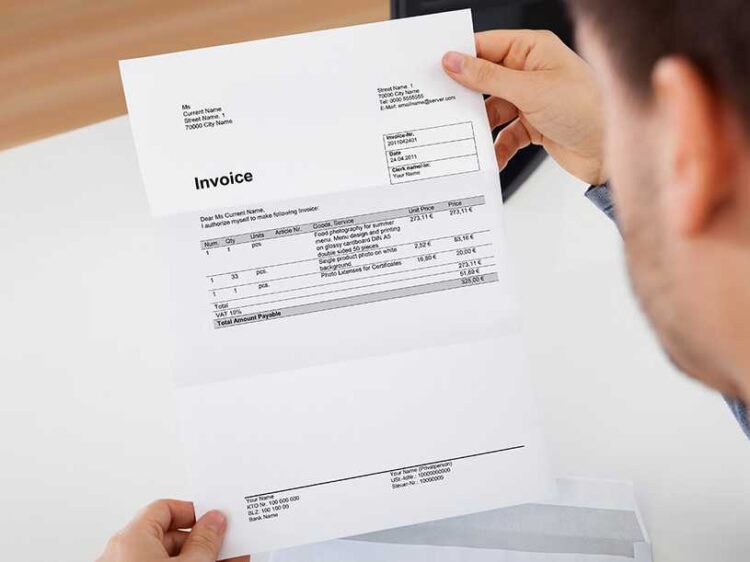How to improve your accounts receivable turnover as a business owner should be your major concern. Because all the money you make from selling your goods and services on credit can’t be regarded as revenue until it’s paid by the clients. As long as you manage your accounts receivable perfectly and collect clients’ payments, your income will increase. A smooth income flow is a good sign in all businesses.
Accounts Receivable Turnover

Accounts receivable turnover is a sign of how well your business converting its accounts receivable into cash. With this, you can detect how efficiently you give credit to customers and collect money they owe by using the Accounts Receivable Turnover Ratio calculation.
In other words, Accounts receivable turnover refers to the number of times in a year that a business receives its accounts receivable. Most business accountants use accounts receivable turnover to calculate how effectively businesses collect on the credit that they give their clients.
How To Calculate Account Receivable Turnover?
Calculating accounts receivable turnover is quite easy. You start by adding the first and last accounts receivable and dividing it by 2 to calculate the average accounts receivable for the year. Whatever you get, divide it into the total credit sales for the year for the average accounts receivable turnover.
Here is a clear sample:
- First accounts receivable + Last accounts receivable / 2 = Total accounts receivable ;
- Total credit sales / accounts receivable = Accounts receivable turnover.
Example:
Business A has a first accounts receivable of $100,000 and a first accounts receivable of $200,000 and a total credit sales of $10 million
To calculate this,
1: $100,000 + $200,000 = $300,000 / 2 = $150,000
2: $10,000,000 / $150,000 = 66.66
Business A has an accounts receivable turnover of 66.66.
Importance Of Account Receivable Account

In general, as your accounts receivable turnover ratio goes higher, the higher case flows into your business, enough to pay up debts and expenditure. But if the turnover ratio is low it simply means; little credit control, inability to collect payment from clients, and poor turn up from customers. So, it is essential to examine your credit status and accounts receivable turnover, as this would help protect the financial status of your business.
How To Improve Your Account Receivable Turnover?
Check out how to improve your account receivable turnover below :
Connect With Your Clients

Building a strong relationship with your clients is the first step to take in improving your accounts receivable turnover. When your clients are on good terms with you, they easily pay for the goods and services without a second thought. It applies to both large firms and small-scale businesses. As little as a phone call or friendly text message to check in with your clients go a long way in your business, you won’t have a problem retrieving payment.
Always Create A Correct Invoice
The fastest kind of bill to pay is a correct and detailed bill, especially if it’s organized in time. As a business owner, you have a habit of making late invoices, you are at risk of receiving late payments from customers.
Always ensure your bill immediately and not waiting until the amount is high before creating an invoice for your clients. Because most times clients tend to forget old bills, plus it is much easier to pay smaller bills than an accumulated bill.
Integrate Terms Of Payment

Make your accounts receivable appear standard by integrating understandable terms of payment on the invoice. On your invoice you can request payment done within a short period, and also include charges for late payment.
Make Your Invoices Simple
Providing your clients with a simple invoice makes it easy for them to get accustomed to your payment method. By doing so, they will comfortably pay off debt. They can either pay through electronic funds transfer or credit card payment.
Make Billing Structure Easy

Most companies have reduced accounts receivable turnover crap and moved on to fixed-fee billing. If you sign a contract agreement with your clients, you also render the same monthly or yearly services at a fixed price. And this is the best way of reducing the fear that comes when a client receives an unusually higher invoice.
The fixed-fee billing contract makes it possible to request for an automatic payment to be withdrawn directly from your client’s bank account every month. And this strikes an agreement on providing your clients with fee billing clarity and making sure you receive regular payments on the expected day
You Have To Follow Up Regularly
Following up regularly with calls and messages might be difficult but it’s a prize you have to pay. Always outline your collection process by making it a policy to create detailed, correct invoices and clear payment terms ahead of time. But if this doesn’t work you put in a friendly call to remind them.
Always Reconcile Account

Your accounts receivable turnover will be more updated if you form the habit of frequently reconciling your accounts. Immediately you collect payments from customers, reconcile outstanding invoices and clear them from the receivable account. This will keep your account balance up-to-date and taking note of turnovers will be wiser. Apart from tracking your business turnovers, you can also monitor the profits made monthly and yearly.
Problems of account receivable and solution
From research, it has been discovered that the majority of companies have policies on account receivable, but they do not make use of it. When you have an outstanding account receivable turnover, it can hurt your flow of cash badly and thereby impair the growth of your business.
The above problems can be solved by:
- Prepare a proper plan to ensure that a timely invoice is sent and a very clear payment is stated ;
- Giving the incentive to make customers pay on time ;
- Get a well-organized database ;
- Have records of all customers.
Conclusion
The account receivable turnover and management is a critical aspect of a company. Attention must be given to the account receivable management to ensure growth. Visit upflow.io to learn more about account receivable turnover.
 Hi Boox Popular Magazine 2024
Hi Boox Popular Magazine 2024



